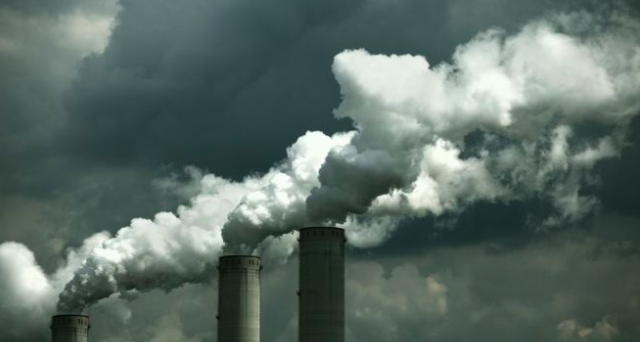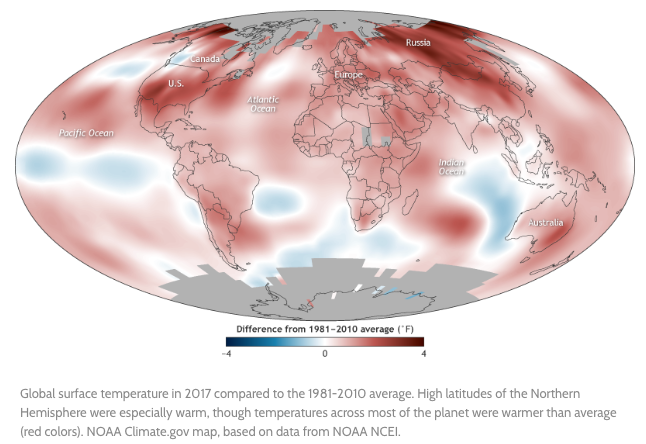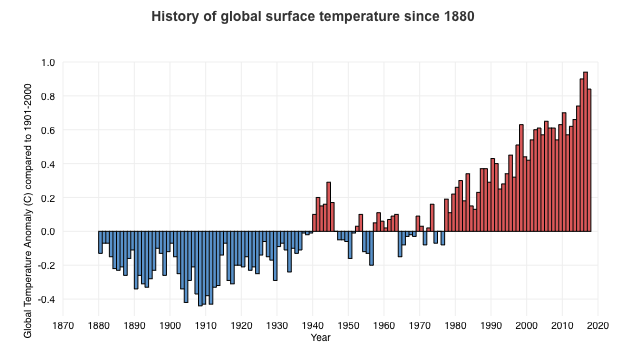EU Aims for Climate Neutrality
November 30, 2018 | Expert Insights

The European Union says it is aiming to become the first major economy to go "climate neutral" by 2050, and has set out a plan to help its members make large cuts in emissions. The EU says the move will also cut premature air pollution deaths by 40%.
Background
Carbon neutrality, or climate neutrality, refers to achieving net zero carbon emissions by balancing a measured amount of carbon released with an equivalent amount sequestered or offset. Emissions are balanced by methods of removing warming gases from the atmosphere, for example in scenarios where warming emissions that are created by cars and power plants should be counteracted by the greenhouse gases removed from the air by the planting of new forests or through carbon capture technologies which would see the CO2 buried underground.
Highly sophisticated methods of attribution have made it possible for scientists contributing to the Intergovernmental Panel on Climate Change (IPCC) to confirm with a high degree of confidence that approximately 1.0°C of global warming above pre-industrial levels has been caused by human activity. The main anthropogenic contributor to climate change is the human-induced build-up of greenhouse gases in the atmosphere, referred to as the greenhouse effect. The report warns that global warming is likely to reach 1.5°C between 2030 and 2052 emissions continue to increase at the current rate. Climate-related risks to health, livelihoods, food security, water supply, human security, and economic growth will increase with global warming of 1.5°C and will rise geometrically with a 2°C increase in temperatures. Regardless, limiting global warming to 1.5°C rather than 2°C is projected to reduce increases in ocean temperature and the associated rise in ocean acidity and falling ocean oxygen levels. It would reduce risks to marine biodiversity, fisheries, and ecosystems, safeguarding their functions and services to humans.

Analysis
The Union has set themselves a difficult target for 2030: cutting emissions by 40%. The EU says it will achieve this target but now plans to go much further again by becoming climate neutral by 2050.
Since 1990 the EU has cut its emissions by over 20% while the economies of member states have continued to grow; regardless climate neutrality would require large cuts in emissions from the current position.
The EU says that climate neutrality can be achieved with existing technologies such as solar and wind energy which would have to be ramped up to provide 80% of electricity. Energy efficiency measures such as home insulation would also need to be boosted to reduce energy consumption by half by the middle of the century.
"With this plan, Europe will be the world's first major economy to go for net-zero emissions by 2050," said EU climate commissioner Miguel Arias Cañete. "We have all the tools to be ambitious."
The EU believes that the measures will help achieve the goals of the Paris agreement will be expensive but will boost economies by 2% of GDP by 2050 and reduce energy imports by over 70%, saving up to three trillion euros a year. The IPCC report on keeping temperatures below 1.5C was a "wake-up call" said Mr Cañete. Reports in recent days have also underlined just how far the gap has grown between what countries promised to do under the Paris agreement, and how far they've gotten with those endeavours.
The UN emissions gap study also showed that the majority of rich countries are not on track to meet their carbon-cutting commitments by 2030. With global climate talks due to start in a few days in Poland the EU's move, although still a strategy and not a firm commitment, will be welcome news.
"If we do not lead, no one else will," said Mr Cañete.

Counterpoint
Some countries such as Germany are struggling with their current commitments and are worried that further cuts would threaten their industries. Others such as Poland are still reliant on coal and would object to even more stringent restrictions on the use of fossil fuels.
Climate campaigners say the step, though welcome, doesn't go far enough fast enough. They are worried that there is no plan to increase the intermediate targets for 2030, which many scientists say is crucial. They also want the net-zero date brought forward.
Assessment
Our assessment is that there needs to be a debate among EU member states about how to achieve the long-term climate neutrality goal, in order to adopt and submit a detailed strategy to the UN at the earliest. We believe that the plan could be hindered by the selection of a new EU commission next year.
India Watch
A Lancet report has raised concern on the debilitating impact of climate change on human health across the world. India is one of the countries worst hit by heat stress and labour hours lost as a result.
India experienced an additional 40 million heat wave exposure cases in 2016 compared to 2012. India also lost nearly 75,000 million labour hours in 2017 (equivalent to a year’s work for 7% of the working population), compared to about 43,000 million hours in 2000. For the agriculture sector alone, the labour hours lost increased from about 40,000 million hours in 2000 to about 60,000 million hours in 2017, says a briefing paper for Indian policy makers by the Public Health Foundation of India (PHFI) based on the Lancet Countdown report.








Comments